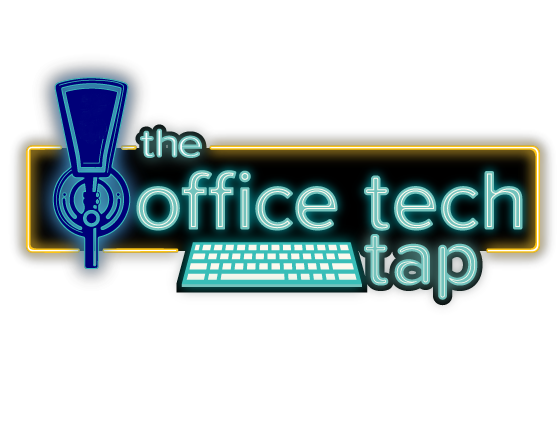🖨️ Deep Dive: Navigating the Technological Cusp🔭

By Greg Walters
In the spring of 2023, as ChatGPT celebrated surpassing 100 million users, Kuang Xu, a seasoned professor of operations, information, and technology at Stanford GSB, found himself grappling with profound questions about the imminent artificial intelligence (AI) era. In a class titled “AI and Data Science: Strategy, Management, and Entrepreneurship,” he delved into the complexities of integrating AI and data science into products and managing teams tasked with these cutting-edge technologies.
“It’s not a binary decision: Do I do AI or do I not do AI? It’s: How do I integrate AI into my operations?”
The AI rush has undeniably arrived, with the mass adoption of tools like ChatGPT signaling a transformative moment. Business leaders, now more than ever, are eager to harness the potential of AI. But, as experts warn, the journey into the AI landscape demands careful consideration and strategic planning.
Getting Ready to Jump In
According to Susan Athey, a professor of economics at Stanford GSB, the quality of AI has soared in recent years, creating a landscape where things will move swiftly. However, she emphasizes that not all businesses may find AI essential at this very moment. The decision to adopt AI should be guided by a thoughtful evaluation of its impact on key business aspects.
Amir Goldberg, an associate professor of organizational behavior, stresses the importance of understanding that AI is not a binary decision but a matter of integration into existing operations. The challenge lies in adopting AI into various business functions, each with its own set of opportunities and risks.
“We believe in an open ecosystem. That’s why if you go into the solutions pavilion, you’ll see so many other vendors around us – even some competitors. If the ecosystem thrives, then we all benefit from it.”
– Connectwise
Finding the Right Tools
To successfully integrate AI, a well-defined strategy is crucial. Mohsen Bayati, a professor of operations, suggests that having a framework in place is essential for deploying AI solutions effectively. Despite the availability of numerous AI tools, Jann Spiess, an assistant professor of operations, warns that the challenge persists in matching the right solution to the right question. The absence of perfected plug-and-play applications for customer-facing or mission-critical functions adds to the complexity.
The sudden expansion of AI capabilities has created what Bayati calls the “alignment gap.” New tools, like large language models, often exceed their original training purposes, posing challenges in ensuring they align with the intended tasks. Testing AI tools on low-risk processes before full-scale deployment is recommended to bridge this alignment gap.
AI for Today’s Businesses
AI breaks the old-world applications in all sectors. AI can serve as a vigilant assistant in businesses, addressing issues as they arise, even enhancing customer experience or reduce human labor to a minimum.
Today, AI is a tool that augments human decision-making rather than replacing it entirely.
In the Office Technology realm, more and more of our established applications are embracing and releasing artificial intelligence-based enhancements.
ConnectWise’s AI Unveiling
In a recent conference, ConnectWise unveiled a set of AI tools, marking a shift from Remote Monitoring & Management (RMM) to Unified Monitoring & Management (UMM). This move aims to cater to the growing needs of managed service providers (MSPs) by delving deeper into network, cloud, and backup monitoring. The introduction of Robotic Process Automation (RPA) and ConnectWise Sidekick, an AI companion, demonstrates the company’s move to enhancing efficiency and customer service through AI-powered solutions.
“AI is not going to replace people’s strategic thinking. It’s not going to replace their creativity…”
ServiceNow’s AI Expansion
ServiceNow, a leading digital workflow company, announced a significant expansion to its Now Assist generative AI portfolio. The new capabilities, including Now Assist in Virtual Agent, flow generation, and Now Assist for Field Service Management, are poised to transform user experiences and increase productivity. ServiceNow looks committed to providing secure and enterprise-wide generative AI solutions seamlessly integrated into workflows.
Transforming Dealerships with AI
CEO Juice has played a pioneering role in decoding the financial mysteries in running a dealership, so it is no surprise, that they are incorporating AI. AI serves as an active monitoring tool, swiftly identifying and addressing issues ranging from premature drum changes to instances of customer dissatisfaction. The implementation of real-time monitoring ensures a proactive stance, contributing to an overall enhancement of service efficiency.
CEO Juice’s utilization of AI stands as another example of bolting AI to an existing plan, designed to optimizing service performance within the copier industry. Through the utilization of machine learning, the platform is designed to streamline processes such as dispatching technicians for printer service calls, underscoring the practical advantages that AI brings. The AI assistant, operating 24/7, mirrors the broader trend within the copier industry towards continuous monitoring and automation.
The Role of Decision-Makers
AI-driven data analysis can be a powerful tool for finding correlations and making predictions that inform your decisions. Amir Goldberg, an associate professor of organizational behavior whose research incorporates data science and organization studies, emphasizes the unknowns and complexities that still surround AI. “If you can construe problems correctly as prediction problems, then you can identify the right subtasks that you can use the machine to help you make decisions with,” Goldberg says. “One big challenge with the adoption of AI is to think in an abstract way about what type of problems are AI-learnable and can then be outsourced to the machine.”
“Leading companies around the world are using generative AI to transform productivity,” said Sonu Nayyar, chief information officer at NVIDIA. “Our team will be using NVIDIA‑powered ServiceNow Now Assist features like case summarization and question‑answering to bring efficiencies to our operations with generative AI.”
– ServiceNow
AI can also be deployed to free up human brainpower for more ambitious tasks. “We see over and over that algorithms hold great promise at improving decisions,” Spiess says. “I see AI as a tool to augment human decision-making by allowing us to scale our expertise so we can focus on the harder cases because automated systems can take care of the cases for which the answer’s pretty clear.”
However, outsourcing problem solving to AI doesn’t mean the technology has all the answers. Goldberg says that AI isn’t a substitute for essential leadership qualities. “AI is not going to replace people’s strategic thinking. It’s not going to replace their creativity,” he says. “It’s not going to replace judgment, which is basically how to translate a prediction into a decision.”
Kuang agrees that business leaders should not let their expertise and judgment take a backseat to AI or cede decision-making authority to the data. “You are still the decision-maker. You cannot outsource that,” he says. “Once you outsource it, it could become a free-for-all cage fight among different teams with diverging priorities and incentives all arguing that they’re ‘using data.’”
Keeping people in the loop still requires an awareness of the potential pitfalls and challenges of human biases in data and machine learning models. “We’re putting human decisions in a context,” Goldberg says. “These contexts are quite complex and difficult to automate. We need to understand human decision-making and we need to understand how to use data and predictions to help us improve those decisions.”
Challenges and Ethical Considerations
Along with the promise of AI come challenges and ethical considerations. Athey raises concerns about the potential for bias in AI algorithms, emphasizing the need for businesses to be vigilant in addressing these issues. She emphasizes that as AI becomes more integrated into decision-making processes, ensuring fairness, accountability, and transparency is paramount.
Goldberg further elaborates on the importance of understanding the biases inherent in data and the potential consequences of relying on biased algorithms. He argues that businesses must actively work to mitigate these biases and develop strategies for responsible AI implementation.
The broader implication of AI, is just as a technological advancement but as a force shaping the future of business and society – The ethical dimensions of AI adoption and the responsibility that comes with wielding such power is transformative .
Conclusion: Navigating the AI Frontier
The significance of navigating the AI frontier with caution and foresight cannot be over emphasized. Office Technology providers and their customers who approach AI not as a panacea or a doomsday, but as a tool that, when wielded with care, will usher in a new era of efficiency, innovation, and growth. There are no playbooks or guidelines as nobody has come here before. The role of decision-makers in steering the course, acknowledging the power of AI while retaining the basic qualities of strategic thinking, creativity, and judgment has never been more on display or important.
– Greg Walters, Head Writer
In the rapidly evolving landscape of AI, Greg Walters, a seasoned tech veteran, continues to be a guiding voice. His insights, honed over 30 years in the field, illuminate the path forward, urging businesses to embrace the AI revolution with a blend of enthusiasm and prudence. As technology’s influence on modern business and society intensifies, the narrative presented here serves as a compass for decision-makers navigating the intricate terrain of the AI frontier. The future is here, and how we embrace and wield the power of AI will shape the destiny of businesses in the years to come.



